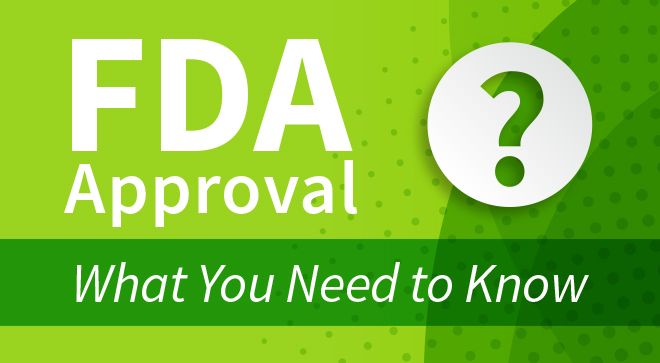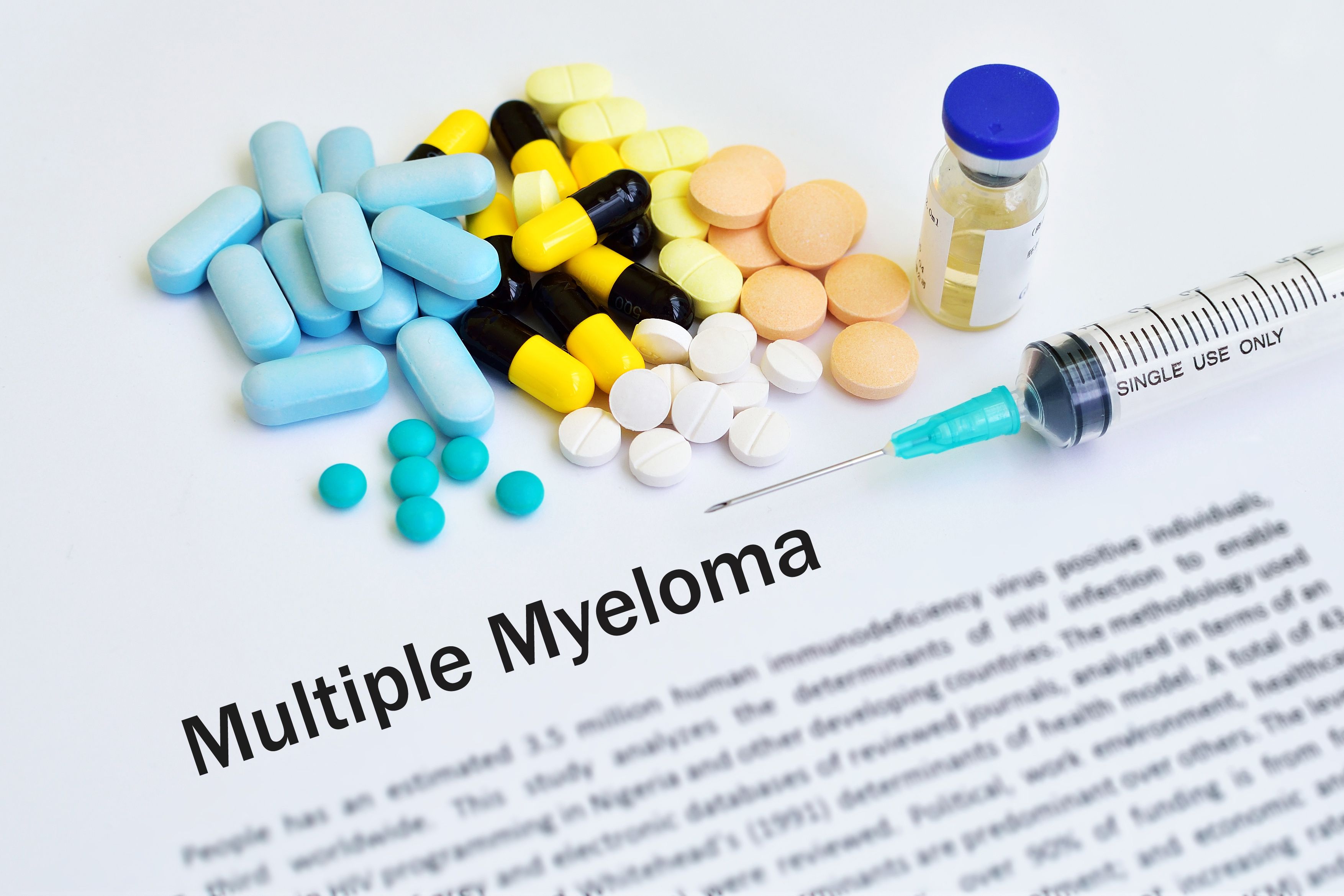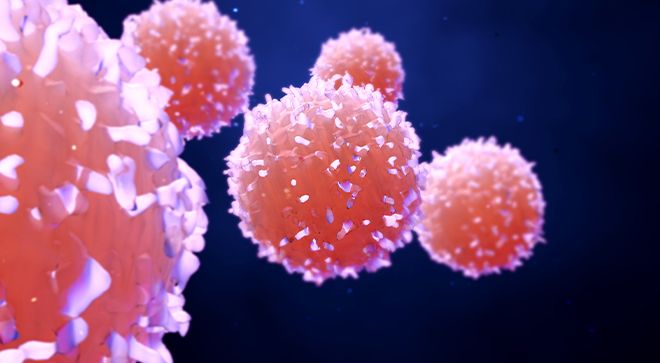News
Article
FDA Approval of Elrexfio Represents ‘a Very Hopeful Time’ for Heavily Pretreated Multiple Myeloma
Author(s):
Elrexfio has been shown to provide patients with relapsed/refractory multiple myeloma who previously received four or more lines of therapy with a response that may last at least 15 months, an expert explained.

The recent Food and Drug Administration approval of Elrexfio (elranatamab-bcmm) to treat adults with heavily pretreated relapsed or refractory multiple myeloma provides patients with another therapy option when treatment resistance ultimately occurs, an expert said.
“It's a very hopeful time for patients with multiple myeloma,” Dr. Alexander M. Lesokhin, associate attending physician on the myeloma service at Memorial Sloan Kettering Cancer Center in New York City, said in an interview with CURE®. “Anytime you see FDA approvals, new drugs becoming available for our patients. I think it's very exciting because we know that we can now provide an additional therapy that offers good chance at high quality response and good durability of response.”
Lesokhin, who was the lead investigator for the trial that led to the FDA approval, recalled some of his personal experience treating patients with Elrexfio, which is indicated for patients who previously received four or more lines of therapy.
“I have patients on these drugs that were enrolled in the trials that have been on them for a year and a half or more, who continue to work and continue to function, and you wouldn't even know that have myeloma. I think that's a wonderful thing,” he said.
CURE spoke with Lesokhin to learn more about the importance of the FDA’s approval of Elrexfio for patients with heavily pretreated relapsed/refractory multiple myeloma, the potential side effects from the drug and how they are managed, and how it compares to another drugs also recently approved by the FDA for a similar indication.
Why was the FDA approval of Elrexfio important for patients with heavily pretreated multiple myeloma?
This a very treatable condition, but ultimately patients become resistant to many and most all, ultimately, available therapeutics. So having another tool in our toolbox available, especially one with a high response rate and good durability of response, is very exciting for patients and providers.
Before this drug was approved, how were patients typically treated if they exhausted other options?
So Elrexfio is approved in this setting of individuals that have received four or more prior lines of therapy, inclusive of an anti-CD38 monoclonal antibody, which could be either Darzalex (daratumumab) or Sarclisa (isatuximab), a proteasome inhibitor, which would be Velcade (bortezomib), Ninlaro (ixazomib) or Kyprolis (carfilzomib) and then typically Revlimid (lenalidomide) or pomalidomide would be the drugs.
These are the mainstay of therapeutics for patients. Everybody in their natural history receives these therapies in various combinations from the get-go, at initial relapse and so on. Once these therapies fail, prior to the advent of BCMA-directed therapeutics, the expected survival time is fairly poor, less than six months.
So having therapeutics in this space that have a response rate in the 60% range and durability lasting, at least with in the case of Elrexfio, with approximately 15 months of follow up, the durability is not known. It's like the median duration of response has not really been reached. So it's quite durable. I think that's very exciting.
Now, I think it's important to note that Elrexfio is not the first BCMA-directed therapeutic approved in this space. We have two CAR-T cell therapies directed at BCMA that are approved, ide-cel (vicleucel) and cilta-cel, both of which are effective. Also, last year we had Tecvayli (teclistamab) approved, which is also a BCMA-directed bispecific off-the-shelf therapy. And in many ways, it's quite similar to Elrexfio. At least at this point, in terms of available data that's been reported, there are some differences, and Elrexfio fairs well in this space, where it has a similar response rate in the 60% range. And, at least at this point, in the patients treated on the main trial that was published, the durability, at least numerically, seems to be longer. You can't compare trial to trial, so it may be related to patient factors that remain to be seen whether there are truly major differences between the two drugs.
Now, one of the things that's cool about this therapy as well as Tecvayli is that they're both off the shelf, available for patients. The durability of response appears to be very high for our CAR-T cell therapy, like cilta-cel. But the challenge of it is that it's approved in the same space where it's very difficult to manage patients during the time that manufacture occurs. And there's also a bandwidth challenge, where you cannot make a CAR-T cell, at least today, for every single patient where you want to make a CAR-T cell. So it's fantastic to have these kinds of options available for patients that are off the shelf.
Are there any side effects associated with this drug? And are they easily managed?
Bispecifics, like all T cell redirectors — and Elrexfio is no different — are associated with an early immune cytokine release syndrome side effect. In the case of Elrexfio, it's fairly easily managed. It's fairly low grade, grade 1 or 2, meaning people get a fever and occasionally may require some supplemental oxygen or additional supportive measures to maintain vital signs. But the majority are simply a fever, low grade kind of events and they occur in approximately 60% of patients. No one needs to stop therapy because of this. But it does require hospital-based observation for the time being.
The schedule with Elrexfio is a day one and four step-up dose administration with 48 hours of observation after the day four dose for fever, and then patients can be discharged after that to continue treatment on the outpatient setting.
Tecvayli is similar, but the administration schedule is a little bit more spread out. So it may take a little bit longer to get to the maximum dose because the full dose is also administered on the inpatient setting.
The other major side effect associated with this treatment, although whether it's related to this whole class of treatments or this specific treatment, I think, probably the class of treatments. And I think we'll see more data on that emerge, but that side effect is infection. So pretty much the majority will over time develop what's called hypogammaglobulinemia, which is low antibody levels. I describe it to patients as a treatment that takes no prisoners, in the sense that you would try to eliminate the bad cell, the plasma cell, but that there are good plasma cells that make antibodies that help us to protect ourselves against various infections. But those are also targeted by this treatment and essentially fully eliminated. And so antibody replacement therapy is something that is commonly used and beneficial to help prevent severe infections in these individuals, but in the clinical trials thus far, where antibody replacement therapy was not uniform at this point, infection rates were in the 70% to 75% range with about 30% or 40% of those infections being significant, requiring hospitalization, antibiotics and so forth. So this is definitely a challenge.
And I think as we continue using these therapies, our understanding of what to look out for and how to prevent various infections is evolving, because preventative medicines in the protocols that have been reported were not universally applied, they were recommended. Whereas at this point, I think we understand that they need to be universally applied, things like antiviral therapies, screening for particular reemergence of viral infections, antibody replacement therapy and periods of antibiotic prophylaxis during episodes when the white blood cell count, the neutrophil count specifically, is low, neutropenia for a prolonged period of time. So I think all of these things will evolve and we will improve in our ability to manage infections so that they will be an issue that can be addressed.
What other unmet needs persist in this area?
I think the clearest need is that even though there's a 60% response rate or 61% for Elrexfio, 63% for Tecvayli, there's two needs. One is, there are up to 40% of patients that are not responding. Who are they? And how do we help these folks? And then the second is the emergence of resistance. Because with Tecvayli, the duration of response is around 18 months, with Elrexfio, we'll see. One would expect that with additional follow up, this will be fairly similar, but it may be much longer. We shall see.
Nevertheless, we don't anticipate that this is a curative therapy. We anticipate that resistance will emerge. And so one of the exciting things here is that there are additional targets for T cell redirecting therapy that are being explored. And the first of these also was FDA approved a couple of weeks ago, Talvey (talquetamab-tgvs), which has also a 70 plus percent response rate and can be effective in individuals that have failed or progressed on BCMA-directed therapies, one, and can be incorporated into a dual target strategy that is directed against both BCMA and GPRC5D, the target of Talvey. So I think all of those in the coming years will be explored, both the combinations of these types of treatments and the sequencing of these type of treatments. And I think we shall see how much improvement they will offer. I expect that it'll be better, and responses will be more durable. And hopefully the side effect profiles will also be similarly manageable as they are with these drugs.
Talvey is a GPRC5D target. So it's a different target. I think it’s wonderful that we can have two drugs FDA approved within a week of each other. So I think Tecvayli being approved and Elrexfio being approved, they're both BCMA-directed therapies and how one selects between one or another remains to be seen. There are subtle differences between them. Some of them are very practical issues. So Tecvayli is weight based in its administration. Elrexfio is fixed dose, which is easier in some ways. And then the duration of hospitalization for management of the step-up dosing to mitigate the early CRS signal is slightly different. It's a little bit shorter time for in-hospital administration for Elrexfio. And at least in the reported studies, the signal of cytokine release syndrome is maybe a little bit milder with Elrexfio. But that may be related to the mitigation strategy used with Elrexfio, but the pretreatment strategies and step-up strategy, it may be related to the patients that actually were treated, and it remains to be seen in real-world experience. How different this will be, but I think that's definitely something that we will be exploring in our practices.
This transcription has been edited for clarity and conciseness.
For more news on cancer updates, research and education, don’t forget to subscribe to CURE®’s newsletters here.




